On to California
Sep. 13-15, 2008
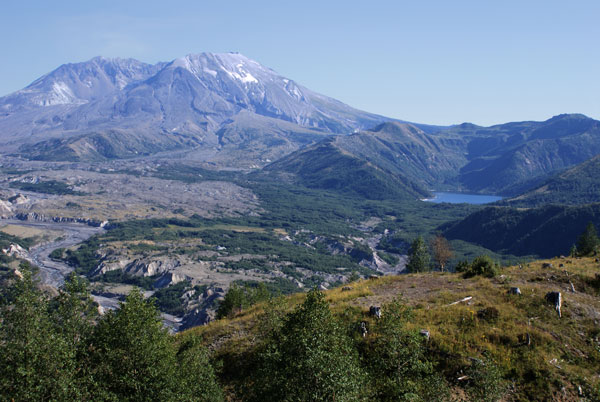
Passing through the state of Washington, we did a sidetrip to see Mount
St. Helens (on the left in the photo). It erupted in August, 1980; the
eruption was especially violent, taking off the top 1600 feet of the
mountain and blowing a
hole in the north side of the mountain. So now the crater is sort of
U-shaped. The lake to the right in the photo is Castle Lake,
which was formed by the eruption. This picture is taken from inside the
blast zone, about eight miles (as the crow flies) from the crater; all
the vegetation you see has developed since the eruption.
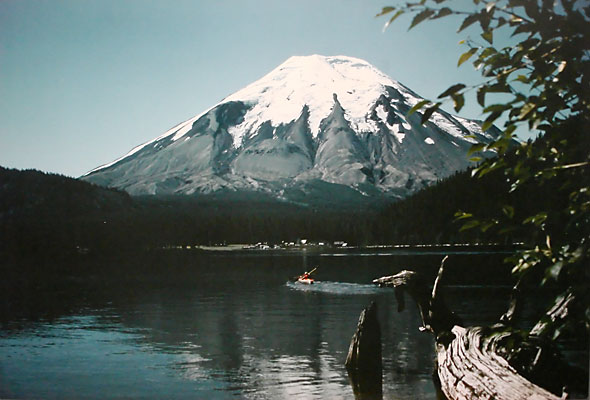
For comparison purposes, this is what Mt. St. Helens looked like before
the eruption. This photo is from Spirit Lake, which was covered by mud and ashes
by the eruption, raising the lake level 200 feet.

A close-up of the lava dome inside the crater. This lava dome has
developed since 2004 and is now more than 1300 feet
high. Note the gases being vented; the volcano is still active,
although on a much weaker scale.
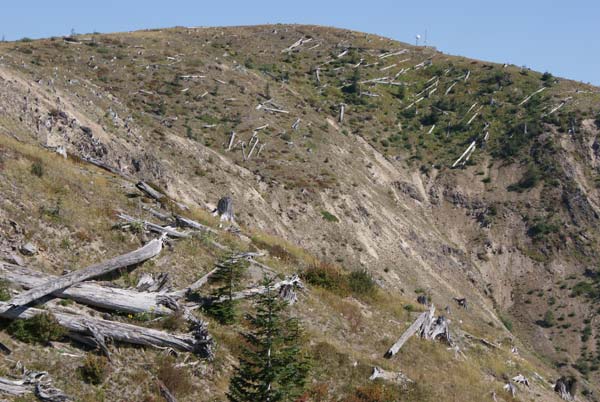
Destruction caused by the eruption. These trees were killed by
the heat and fierce winds during the eruption. Forest lands outside Mt.
St. Helens National Monument have been replanted by the State of
Washington and Weyerhauser, but inside the national monument no attempt
is being made to reseed the forest; they are letting nature take its
natural course.

This tree trunk inside the visitor center shows the effect of the
blast from the eruption. Surprisingly, the tree did not catch fire;
this was supposedly because it was a live tree and contained a lot of
moisture.
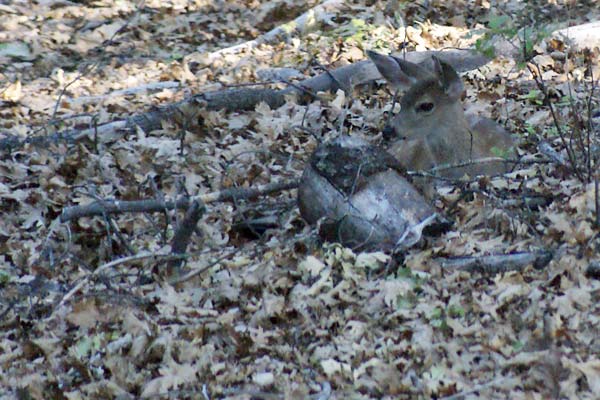
After driving through Oregon, we layed over part of a day at
Whiskeytown Lake near Redding, CA and did some kayaking. It was very
nice, although the RV park was nothing more than a parking lot. This
fawn rested in the leaves near our camper while mama fed nearby.
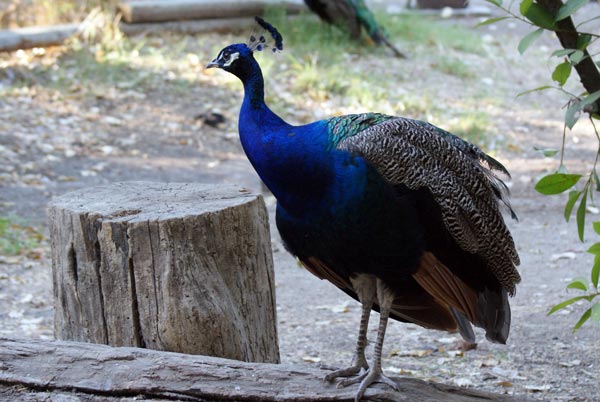
We then
drove on to Winters, CA and camped at Lake Solana County Park, which is
a very pleasant campground; we should remember this place if we
pass through here again and need a place to stay. We found a
resident population of peacocks; the person running the campground said
that they had been imported to reduce the rattlesnake population. It
turned out, however, that people found the peacocks lovable and started
feeding them, so they didn't need to hunt rattlesnakes for food. As a
result, the rattlesnake population did not decrease, and the peacock
population increased.






